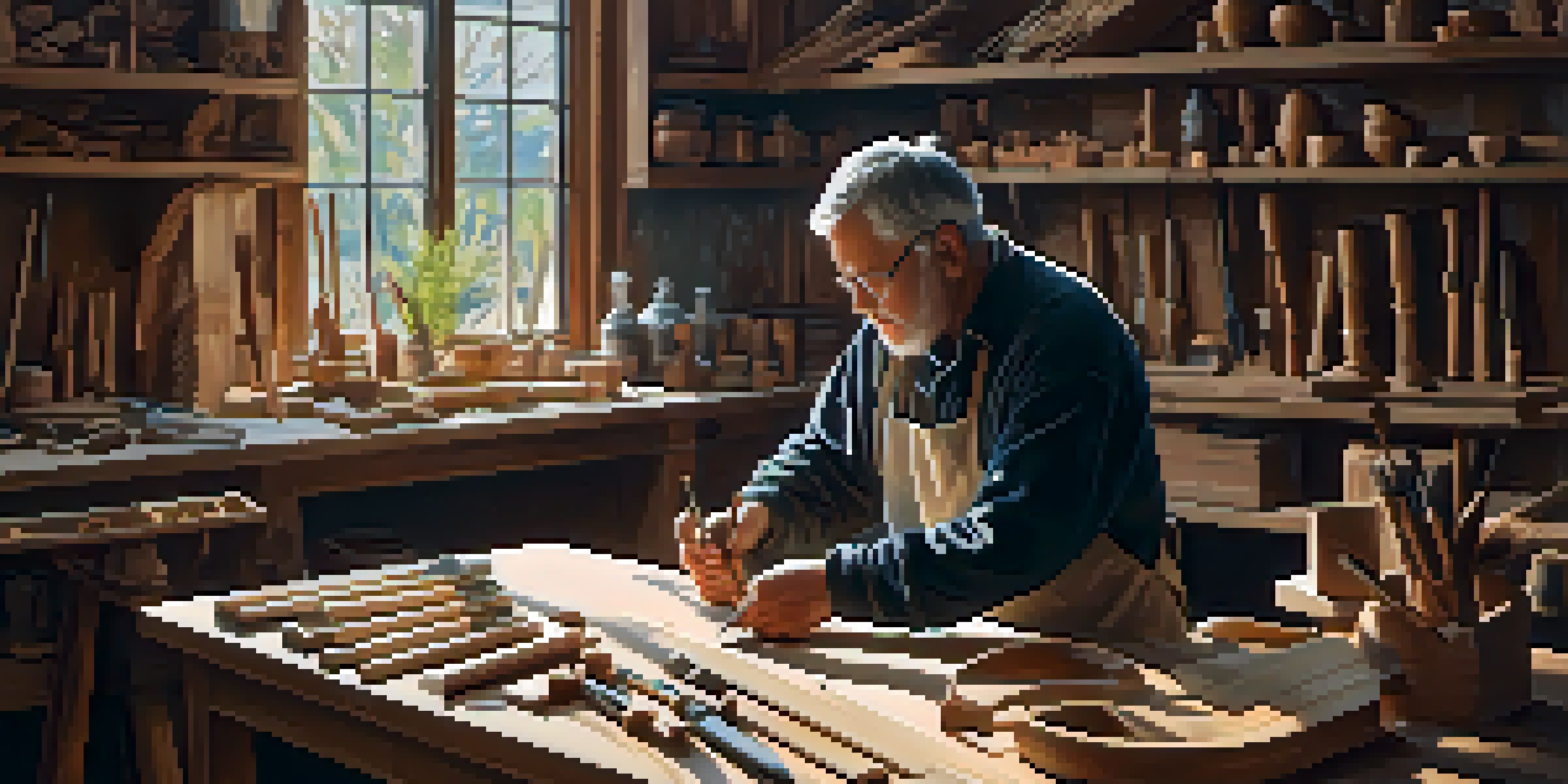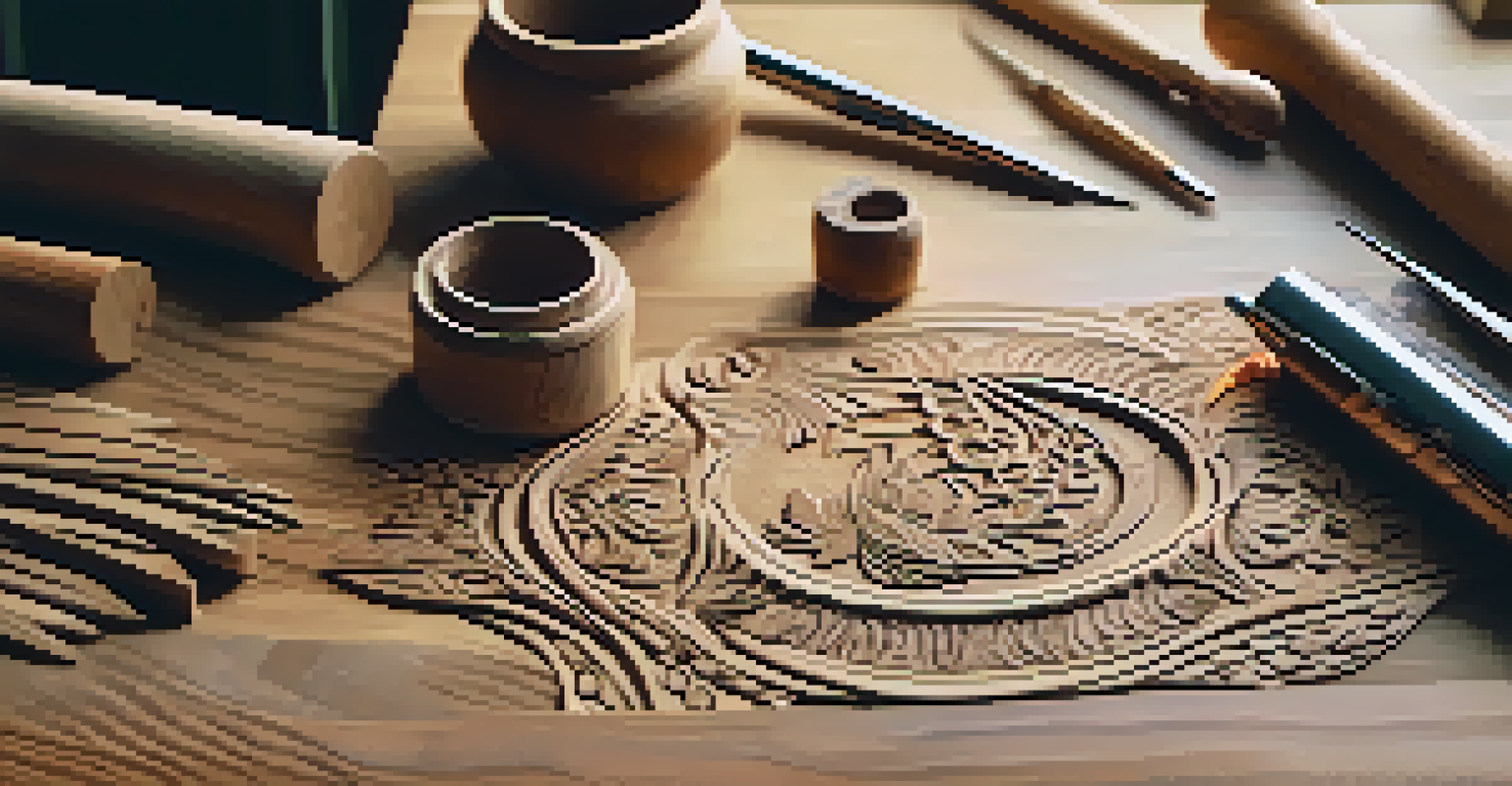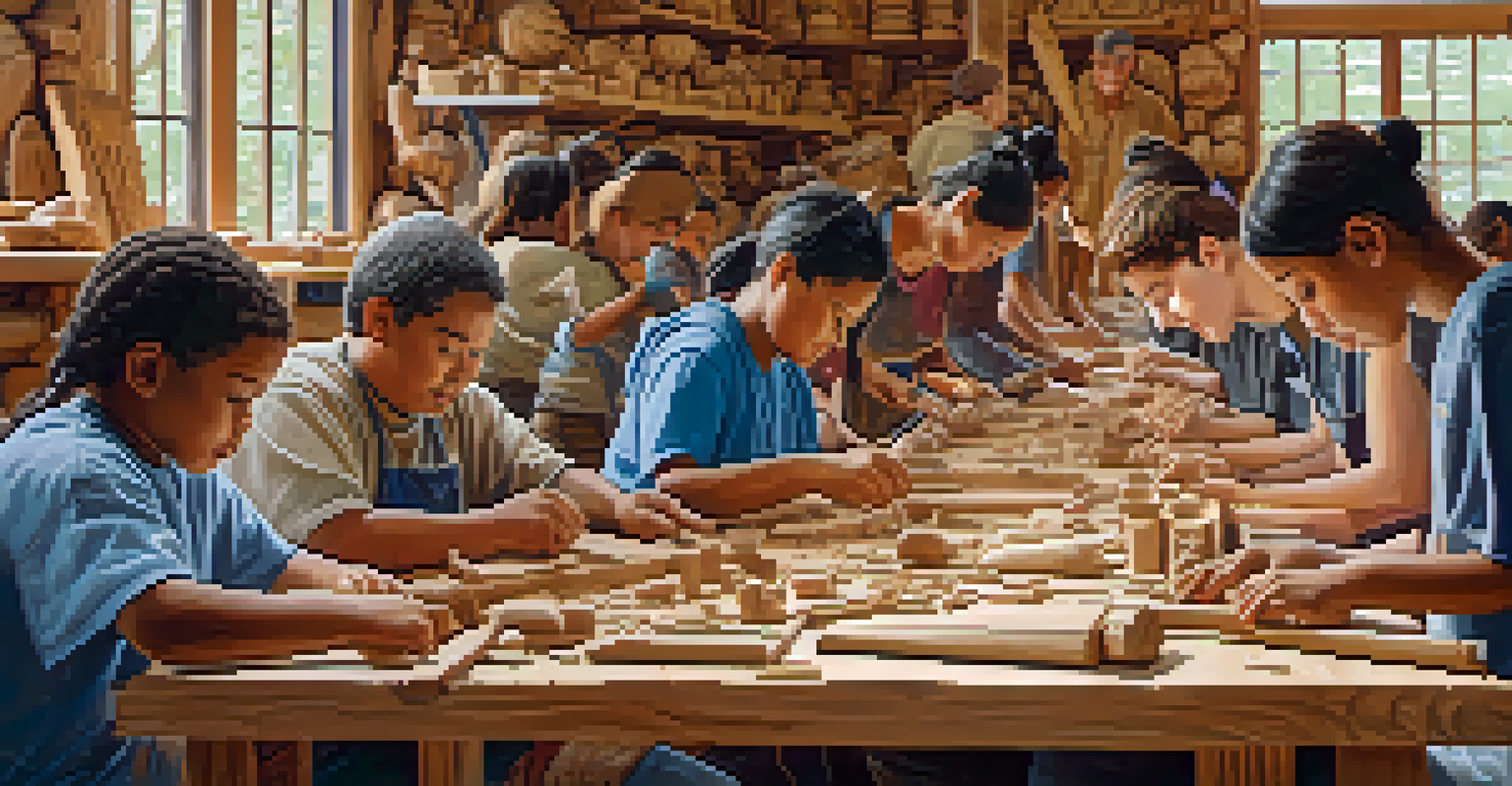The Neuroscience Behind Carving and its Psychological Effects

Understanding the Basics of Neuroscience in Carving
Neuroscience delves into how our brain processes thoughts, emotions, and actions. When we engage in activities like carving, our brain responds by activating various neural pathways. These pathways influence not just our motor skills but also our emotional states, suggesting that carving can be more than just a creative outlet.
Art is not freedom from discipline, but disciplined freedom.
For instance, when you carve, whether it's wood or stone, you’re not just shaping material; you're also shaping your mental state. The act of focusing on a single task can lead to a meditative state, which many find calming. This connection between the physical act and mental clarity is a fascinating aspect of neuroscience.
Moreover, studies indicate that engaging in hands-on activities can boost dopamine levels, the neurotransmitter associated with pleasure and reward. Thus, every time you make a precise cut or see your design come to life, your brain reinforces this positive experience, making you want to carve more.
The Emotional Benefits of Carving
Carving isn't just a physical activity; it profoundly impacts our emotions. Many people find that working with their hands helps them express feelings they might struggle to articulate verbally. The tactile nature of carving can evoke a sense of accomplishment and increase self-esteem as individuals create tangible results from their efforts.

For example, imagine an artist who spends hours carving a piece. Each stroke not only brings the artwork to life but also allows the artist to channel their emotions into the material. It’s a therapeutic process that can alleviate stress and anxiety, much like how one might find solace in gardening or cooking.
Carving Boosts Mental Well-Being
Engaging in carving can enhance emotional health by providing a therapeutic outlet for expression and mindfulness.
Additionally, the focused attention required in carving can serve as a form of mindfulness. By concentrating on the task at hand, individuals often find themselves momentarily escaping the pressures of daily life, leading to a happier and more balanced state of mind.
How Carving Engages the Brain's Reward System
Engaging in carving activates the brain's reward system, which plays a significant role in how we feel pleasure. When you complete a carving project, your brain releases feel-good chemicals like endorphins and dopamine, reinforcing the behavior. This biochemical reward can create a cycle of motivation, encouraging you to pick up your tools even more often.
Every artist dips his brush in his own soul, and paints his own nature into his pictures.
Consider the joy of finishing a challenging piece: the sense of achievement can be exhilarating. This is why many hobbyists become passionate about carving; the immediate rewards keep them coming back for more. It’s not just about the end product but also about the journey of creating it.
Moreover, this reward system is not only limited to the act of carving itself but extends to the appreciation of the finished product. Sharing your work with others can amplify this effect, as positive feedback from peers or loved ones further boosts your mood and reinforces your carving practice.
The Therapeutic Effects of Carving in Mental Health
Carving has emerged as a valuable therapeutic tool for individuals facing mental health challenges. Activities that require focus and creativity, like carving, can help reduce symptoms of anxiety and depression. The hands-on nature of carving allows individuals to express themselves in a non-verbal way, which can be incredibly liberating.
For instance, art therapy often incorporates various mediums, and carving offers a unique tactile experience. It encourages participants to engage with their emotions, allowing them to explore feelings they may find difficult to confront. The calming rhythm of carving can create a sense of peace and stability.
Creativity and Focus Unite
The focused attention required in carving promotes a meditative state, helping individuals escape daily pressures.
In many therapeutic settings, carving has been used to foster self-discovery and healing. The process of shaping something from raw material can mirror personal growth, helping individuals work through their own struggles while creating something beautiful.
The Connection Between Carving and Mindfulness
Carving naturally aligns with the principles of mindfulness, which emphasizes being present and fully engaged in the moment. When you carve, your attention shifts to the texture of the material, the movement of your tools, and the design unfolding before you. This focus helps quiet the mind, making it a perfect practice for mindfulness.
Imagine yourself carving a delicate pattern; every cut requires concentration and precision. This immersive experience can pull you away from distracting thoughts and worries. In essence, it becomes a form of meditation, where the act of creating takes precedence over everything else.
Additionally, this mindfulness practice can have lasting benefits beyond the carving session. Many find that the calm and clarity achieved during carving translates into their daily lives, helping them manage stress and maintain focus in other areas.
The Role of Community in Carving Activities
Carving can also foster a sense of community, which is essential for psychological well-being. Joining a carving club or participating in workshops allows individuals to connect with others who share their passion. This sense of belonging can significantly impact mental health, providing social support and encouragement.
Consider how sharing your passion for carving can lead to meaningful friendships. As you exchange techniques, ideas, and experiences, you build not just skills but also a network of support. This camaraderie can be incredibly uplifting, especially during challenging times.
Community Enhances Carving Experience
Joining carving groups fosters connections and support, enriching the overall experience and reinforcing mental health benefits.
Moreover, community events centered around carving—like exhibitions or competitions—create opportunities for individuals to showcase their work. Celebrating achievements together fosters a sense of pride and validation, reinforcing the positive psychological effects of the craft.
Incorporating Carving into Daily Life for Better Well-Being
Incorporating carving into your daily routine can greatly enhance your overall well-being. Even setting aside just a few minutes a day to carve can help you reap the mental health benefits discussed earlier. The key is consistency; regular practice can deepen the connection between carving and emotional resilience.
For those new to carving, starting small with simple projects can make the process less intimidating. As you gain confidence, you can gradually take on more complex designs, keeping the experience fresh and exciting. This incremental approach allows you to enjoy the journey while also witnessing your growth.

Ultimately, whether you’re carving for fun or as a form of therapy, the act itself can become a cherished part of your routine. By prioritizing this creative outlet, you not only cultivate a new skill but also nurture your mental and emotional health.